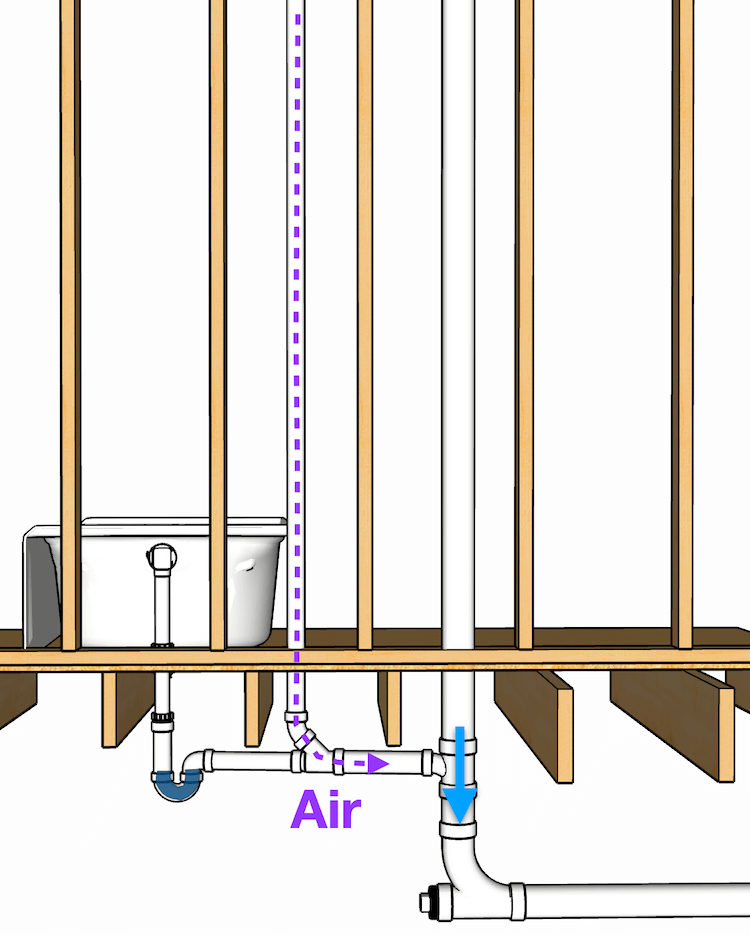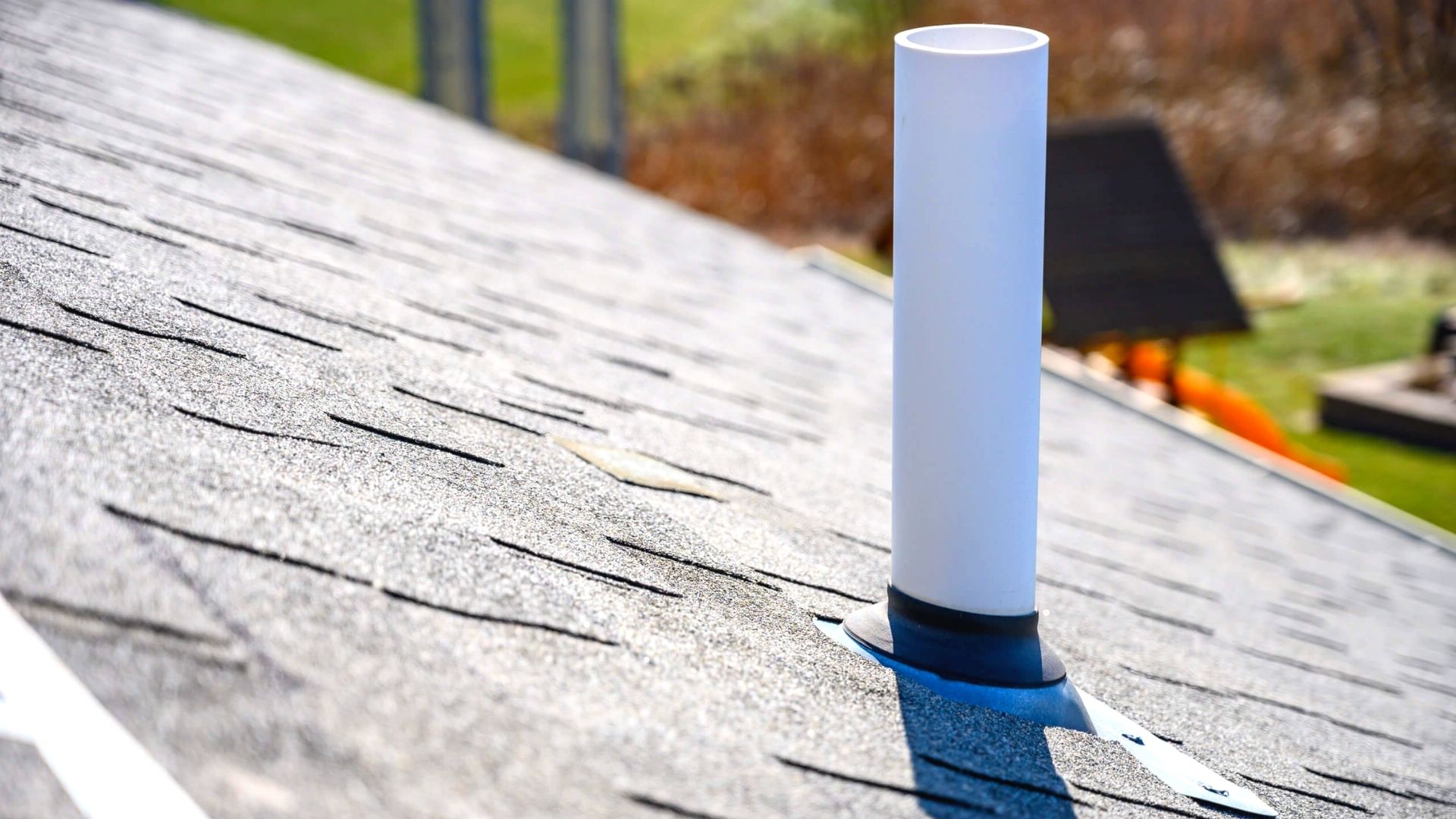The Reason Why Proper Ventilation is Key in Plumbing Systems
The Reason Why Proper Ventilation is Key in Plumbing Systems
Blog Article
The author is making a few great observations related to What Is A Plumbing Vent & How Do They Work? in general in this great article underneath.

Correct air flow in pipes systems is commonly neglected, yet it is essential for keeping the performance and safety of your home's pipes. Ventilation assists manage air pressure, protect against the accumulation of unsafe gases, and guarantee the reliable removal of waste. In this overview, we will certainly check out the significance of appropriate plumbing air flow, how it works, and the benefits it brings to your plumbing system.
Understanding Ventilation in Plumbing
Air flow in plumbing describes the network of pipes that permit air to move via the drainage system. These vents serve several objectives, including controling atmospheric pressure within the pipes, preventing sewer gases from entering the home, and aiding in the smooth flow of wastewater.
How Air Flow Functions in Plumbing Equipments
Atmospheric Pressure Policy
Correct ventilation keeps balanced atmospheric pressure within the plumbing system. When water moves with pipelines, it displaces air. Without sufficient air flow, this displacement can produce unfavorable stress, leading to slow drains or siphoning of water from traps, which can create undesirable odors to seep right into the home.
Preventing Drain Gas Accumulation
One of one of the most vital features of pipes vents is to stop sewer gases, such as methane and hydrogen sulfide, from gathering within the home. These gases can present significant health and wellness threats and are very combustible. Vent pipelines permit these gases to run away securely outside.
Helping in Waste Removal
Ventilation aids in the reliable removal of wastewater by avoiding airlocks in the drain system. When air can flow openly through the vents, it enables water and waste to move smoothly with the pipes, minimizing the threat of obstructions and backups.
Sorts Of Pipes Vents
Main Heap Vent
The main stack vent, additionally referred to as the air vent stack, is the key vent in a plumbing system. It prolongs from the primary drain align through the roof covering, permitting gases to leave and fresh air to get in the system.
Branch Vent
Branch vents attach to the main stack air vent and offer individual fixtures, such as sinks, commodes, and showers. These vents ensure that each fixture has appropriate air flow to function appropriately.
Air Admission Valve (AAV).
An Air Admission Valve (AAV) is a one-way valve that allows air to enter the plumbing system without the requirement for a typical air vent pipeline prolonging with the roof covering. AAVs are commonly made use of in renovations or locations where mounting a common air vent is impractical.
Signs of Poor Air Flow in Plumbing.
Slow Draining Fixtures.
If your sinks, bathtubs, or bathrooms are draining gradually, it could be a sign of inadequate ventilation. Poor air circulation can create a vacuum cleaner effect, making it hard for water to drain properly.
Gurgling Seems.
Gurgling noises originating from drains are typically a result of air being drawn with water traps due to unfavorable pressure in the pipes. This is a clear sign of not enough air flow.
Undesirable Smells.
Sewage system odors inside your home are a red flag that your plumbing system is not correctly ventilated. This could imply that sewage system gases are not being effectively vented outside, resulting in possibly dangerous conditions.
Typical Ventilation Blunders.
Inadequate Vent Sizing.
Utilizing undersized air vent pipes can cause poor air circulation and stress inequalities in the system. It's essential to use vents that satisfy the certain needs of your plumbing system.
Improper Vent Placement.
Putting vents too much from the fixtures they serve can lower their efficiency. Appropriate placement makes sure that air can move freely and successfully through the system.
Disregarding Code Requirements.
Building codes give particular guidelines for plumbing ventilation. Ignoring these codes can cause a system that stops working to operate properly and may lead to expensive fixings or carcinogen.
Advantages of Proper Ventilation.
Improved System Effectiveness.
Effectively aerated pipes systems operate a lot more efficiently, with fewer obstructions, faster draining pipes, and much less pressure on the pipelines. This performance expands the life-span of the pipes system.
Improved Air High Quality.
By protecting against sewage system gases from entering your home, appropriate ventilation contributes to better interior air quality, making your living environment healthier and much more comfy.
Preventing Water Damage.
Sufficient air flow helps stop water from being siphoned out of catches, which can lead to drain gases entering the home and triggering water damage over time.
Steps to Make Sure Correct Air Flow.
Consulting Pipes Codes.
Always seek advice from neighborhood plumbing codes when designing or customizing your pipes system. These codes provide the required standards for correct venting and ensure your system meets security requirements.
Normal Inspection and Maintenance.
Regular evaluations can assist determine prospective air flow problems before they end up being major issues. Upkeep tasks, such as cleaning air vent pipes and looking for clogs, are vital for maintaining the system in good working order.
Expert Setup.
For new installations or significant modifications, it's smart to employ a professional plumbing technician. They have the know-how to guarantee the air flow system is correctly developed and set up according to code.
Final thought.
Correct air flow is a critical part of any kind of plumbing system, ensuring that it works efficiently and securely. By recognizing the significance of air flow, recognizing the indications of bad air flow, and taking steps to preserve your system, you can stop pricey concerns and safeguard your home's air high quality.
4 Things You Should Know About Your Plumbing Vents
What Plumbing Vents Are
Also called a vent stack, a plumbing vent is a vertical pipe attached to your drain line that runs through your roof. The plumbing vent pipe, or plumbing air vent, removes gas and odors from your plumbing system and allows fresh air to enter the pipes, helping the water to flow out of the drain pipes.
What Plumbing Vents Do
Plumbing vents have two basic functions. One of which is to allow unpleasant smelling wastewater and sewer gasses to escape your plumbing system instead of entering your home. Plumbing vent pipes are typically located on roofs, away from windows, to ensure the fumes exit the home completely.
The other function of the plumbing vent is to move fresh air into your plumbing system. This helps move water through every plumbing fixture in your house, like toilets and sink drains. Think of the way in which you need to let a little air into the bottle as you pour soda in order to make the drink flow smoothly.
Different Types of Plumbing Vents
True vent: This is the most common vent option. In simplest terms, a true vent is a vertical pipe attached to your drain line that exits through the roof. They often function as the main vent that other fixtures can connect to. Re-vent pipe or auxiliary vent: Attached to the drain line near specific plumbing fixtures, re-vent pipes run up and over to connect to the main vent. Common vent: Two plumbing fixtures installed on opposite sides of a wall are typically tied into the vent stack using something known as a sanitary cross. Wet vent: This venting option operates as a drain pipe and a vent at the same time. Wet vent drainage systems drain water from one fixture while venting the air from another. Although they’ve been used for over 100 years, wet vent systems have only recently been added to the plumbing code in many areas. If you’re planning on installing one in a bathroom remodel, make sure you check your local code prior to construction. Loop vent: For free-standing fixtures like kitchen island sinks, loop vents are ideal. These vent pipes run under the floor, rise from the P-trap, and create a loop inside the cabinet sink. Air admittance valve: An AAV is a one-way mechanical valve typically installed at the site of the plumbing fixture. AAVs allow venting to occur without having to tie into a larger venting system. They’re ideal for venting fixtures where you aren’t able to easily connect to an existing vent system. Common Plumbing Vent Issues
Although vent pipes typically don’t have water flowing through them, they’re still subject to many typical plumbing issues. For example, clogs are one of the most common problems associated with sewer vent pipes. If your vent pipe gets clogged, all of your plumbing fixtures tied into the vent stack will be affected.
A sink with a slow drain that bubbles and gurgles or a strong sewage smell around your toilet are both indicators that your toilet vent pipe is clogged. Because most vent pipes exit through the roof, old leaves, twigs or even a bird’s nest could be clogging the pipe.
Clogs in your vent pipe system cause a buildup of negative pressure, meaning that water won’t be able to flow out of your home very well. It’s similar to putting your finger over the opening of a straw to trap water inside. When you remove your finger, the water is able to flow out of the straw.
If you suspect you have any blockage in your vent, make sure you have a professional come examine the situation. Left unchecked, a blocked air vent can lead to other costly repairs, like leaks and sediment buildup.
Under Pressure
Pipe vents are essential aspects of a home’s plumbing system. Owning a home means learning about all sorts of things you never put much thought into before. But by understanding as much as you can about the important systems of your home, you can keep those budgets intact and those anxiety levels low.
https://www.homeserve.com/en-us/blog/home-improvement/plumbing-vents/

Do you enjoy reading up on What Is a Plumbing Vent and Why Is It Important? Write a remark directly below. We will be happy to see your views about this post. Hoping that you visit us again in the future. So long as you liked our blog entry plz remember to share it. Thanks a bunch for your time. Come back soon.
Find Out More Report this page